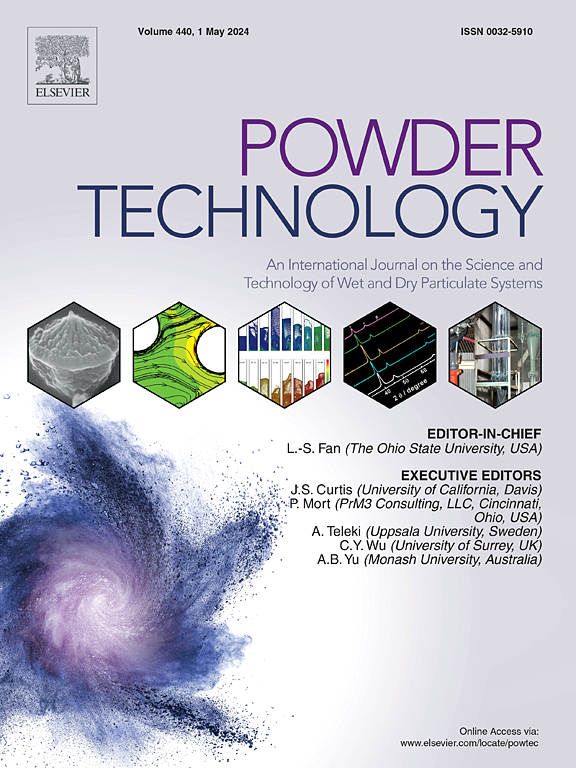Preparation and characterization of uniform polyurea microspheres via an environmental-friendly synthetic process: The swelling and shrinkage phenomena
IF 4.5
2区 工程技术
Q2 ENGINEERING, CHEMICAL
引用次数: 0
Abstract
In this work, a non-toxic isocyanate HDB-LV is used for the first time to produce monodispersed polyurea microspheres with a size from 10 to via a microfluidic droplet approach. The toxic ethylenediamine which is usually necessary for the synthesis of polyurea, is found to be not adaptable for the formation of polyurea microspheres because it can either cause swelling (at low amine concentration) or deformation (at high amine concentration) of the microspheres. A theoretical mechanism for the swelling phenomenon of microspheres is elucidated. Alternatively, thermal hydrolysis of isocyanates that can generate amines is proven to be very effective for the synthesis of polyurea microspheres. A linear relationship between the sizes of microfluidic droplets and polyurea microspheres is found and discussed quantitatively. In the end, the polyurea microspheres from 2 to are characterized to have no obvious scattering effects against UV.

环境友好型聚脲微球的制备与表征:膨胀与收缩现象
在这项工作中,首次使用无毒的异氰酸酯HDB-LV通过微流控液滴法生产尺寸为10至40μm的单分散聚脲微球。合成聚脲所必需的有毒物质乙二胺不适合聚脲微球的形成,因为它会导致微球膨胀(低胺浓度)或变形(高胺浓度)。阐述了微球膨胀现象的理论机理。另外,可以产生胺的异氰酸酯的热水解被证明对聚脲微球的合成非常有效。发现微流控液滴尺寸与聚脲微球尺寸之间存在线性关系,并进行了定量讨论。结果表明,2 ~ 40μm的聚脲微球对紫外无明显的散射效应。
本文章由计算机程序翻译,如有差异,请以英文原文为准。
求助全文
约1分钟内获得全文
求助全文
来源期刊

Powder Technology
工程技术-工程:化工
CiteScore
9.90
自引率
15.40%
发文量
1047
审稿时长
46 days
期刊介绍:
Powder Technology is an International Journal on the Science and Technology of Wet and Dry Particulate Systems. Powder Technology publishes papers on all aspects of the formation of particles and their characterisation and on the study of systems containing particulate solids. No limitation is imposed on the size of the particles, which may range from nanometre scale, as in pigments or aerosols, to that of mined or quarried materials. The following list of topics is not intended to be comprehensive, but rather to indicate typical subjects which fall within the scope of the journal's interests:
Formation and synthesis of particles by precipitation and other methods.
Modification of particles by agglomeration, coating, comminution and attrition.
Characterisation of the size, shape, surface area, pore structure and strength of particles and agglomerates (including the origins and effects of inter particle forces).
Packing, failure, flow and permeability of assemblies of particles.
Particle-particle interactions and suspension rheology.
Handling and processing operations such as slurry flow, fluidization, pneumatic conveying.
Interactions between particles and their environment, including delivery of particulate products to the body.
Applications of particle technology in production of pharmaceuticals, chemicals, foods, pigments, structural, and functional materials and in environmental and energy related matters.
For materials-oriented contributions we are looking for articles revealing the effect of particle/powder characteristics (size, morphology and composition, in that order) on material performance or functionality and, ideally, comparison to any industrial standard.
 求助内容:
求助内容: 应助结果提醒方式:
应助结果提醒方式:


